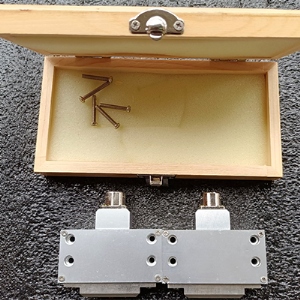Where are speed sensors more used?
The speed sensor is connected to the ABS and ASR computer. In order to check the failure of the wheel speed sensor, unplug the plug connected to the computer and measure the resistance value of the speed sensor with a digital multimeter. If the resistance value is 0, there is a short circuit; if the resistance value is large , it means that there is an open circuit. Remove the plug at the end of the speed sensor, and then measure the resistance value again. If the resistance value is correct, it means that the speed sensor is good, and the fault is on the transmission cable line; if the resistance value is incorrect, the speed sensor may be faulty. Can be searched further to confirm.
After unplugging the plug connected to the computer, you can drive the vehicle to turn the wheels, or you can support the wheels to turn the wheels manually to measure the AC voltage value at the plug of the wheel speed sensor. You can also use an electronic oscilloscope to observe the AC voltage at the plug of the wheel speed sensor Voltage waveform. The frequency of the waveform should change with the change of the rotation frequency of the wheel speed, and its amplitude should also change with the change of the speed. When it is confirmed that the fault is on the transmission cable line, the cable can be repaired or replaced with a new one. When the speed sensor appears When it fails, it should be repaired immediately. When it cannot be repaired, it can be replaced with a new one.
When installing and adjusting the speed sensor on the wheel, ensure the gap between the speed sensor and the rotating notch ring (gear). If the gap is too large, the induced voltage signal is small, and if the gap is too small, it is easy to collide, contact and wear the ring. When assembling, a thick cardboard can be placed in the gap to keep the gap at about 1mm, and then connect the transmission cable connector. Follow the above method. It is more reliable to repair the fault.
As the information source of the automotive electronic control system, the vehicle speed sensor is a key component of the automotive electronic control system and one of the core contents of the automotive electronic technology field. It detects the speed of the electronically controlled vehicle, and the control computer uses this input signal to control other functions, such as Engine idling, torque converter lock-up for automatic transmission, automatic transmission shifting, engine cooling fan on and off, and cruising speed fixation.
When the vehicle speed sensor detects the wheel speed signal on the vehicle, the commonly used sensor is an electromagnetic induction sensor. The general practice is to install the sensor on the non-rotating part of the wheel assembly (such as the steering knuckle or the axle head), together with the wheel The ring gear made of rotating magnetically permeable material is opposite. When the ring gear rotates relative to the sensor, due to the change of magnetic resistance, an AC voltage signal will be excited on the sensor. The frequency of the AC voltage is proportional to the wheel speed. ECU uses a special The signal processing circuit converts the sensor signal into a square wave of the same frequency, and then calculates the wheel speed by measuring the frequency or period of the square wave.
The output signal of the speed sensor can be a magnetoelectric AC signal, a Hall-type digital signal or a photoelectric digital signal. The vehicle speed sensor is usually installed in the drive axle housing or the transmission housing, and the signal line of the vehicle speed sensor is usually installed in a shielding sleeve to eliminate high voltage. Electromagnetic and radio frequency interference from live wires, car phones or other electronic devices to ensure uninterrupted electronic communications and prevent poor drivability.
A speed sensor is a device used to detect the speed of an electronically controlled vehicle. It also has other functions such as the control computer uses this input signal to control the engine idle speed, the torque converter lock of the automatic transmission, the shifting of the automatic transmission, the turning on and off of the engine cooling fan And the cruising speed is fixed.
The magnetoelectric speed sensor is an analog AC signal generator, usually composed of a magnetic core and a 2-terminal coil. The vehicle speed sensor detects the speed of the electronically controlled vehicle, and the control computer uses this input signal to control other functions, such as engine idling, automatic transmission Torque converter lock-up, automatic transmission shifting, engine cooling fan on and off, and cruising speed fixation.


